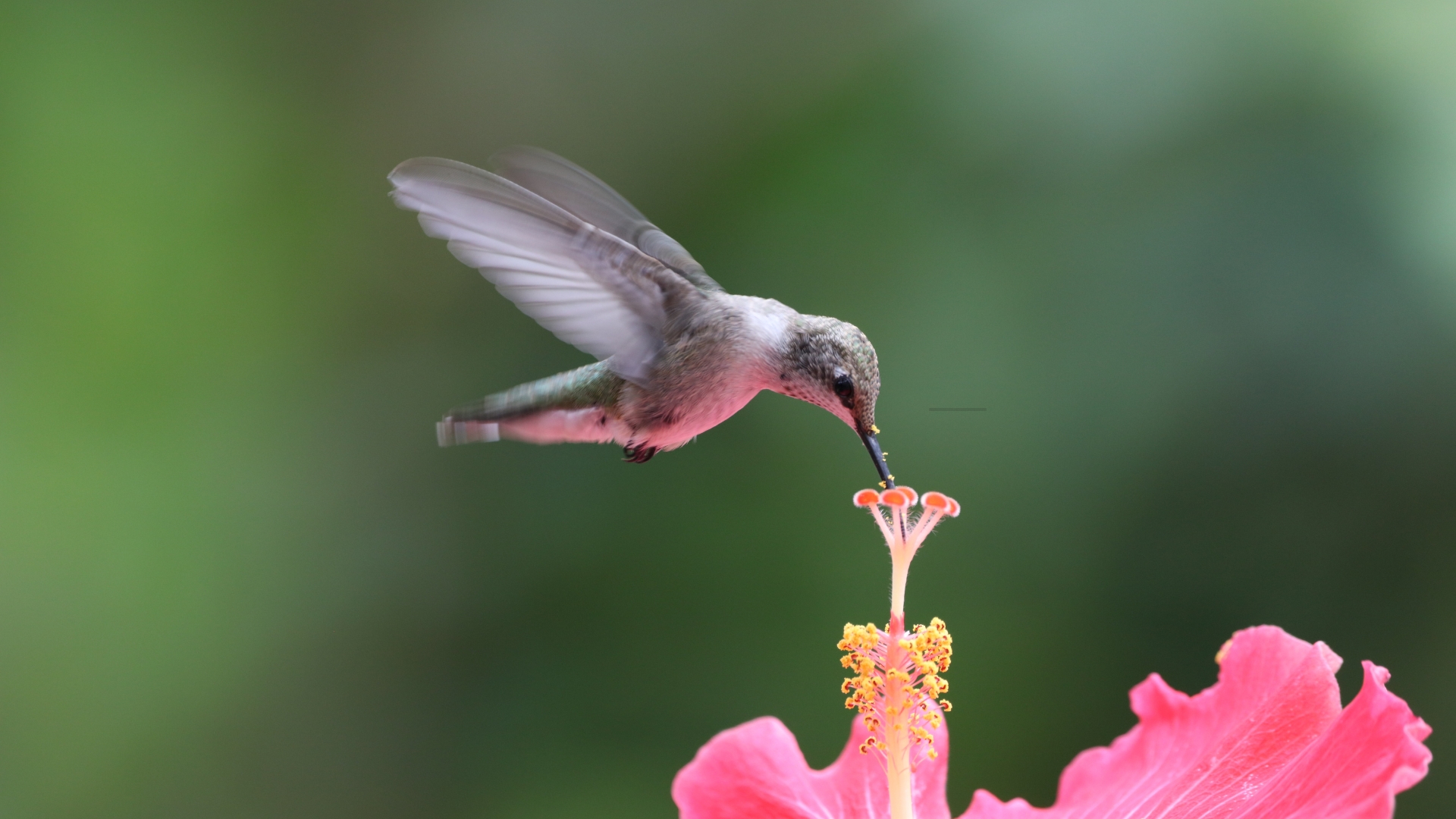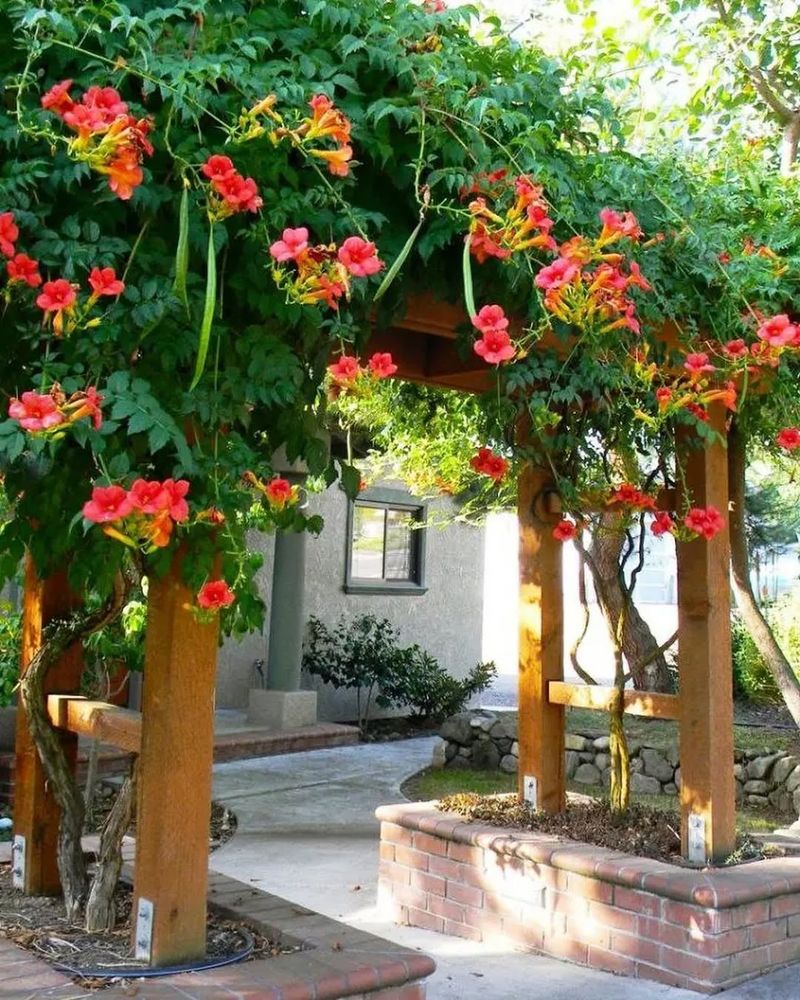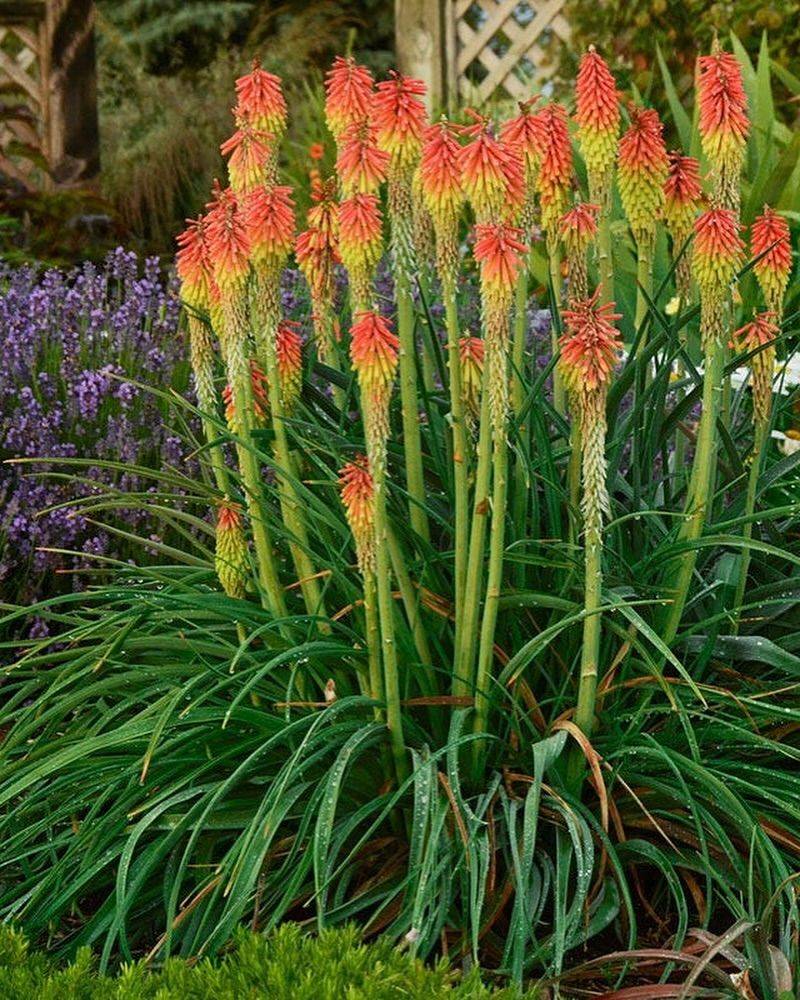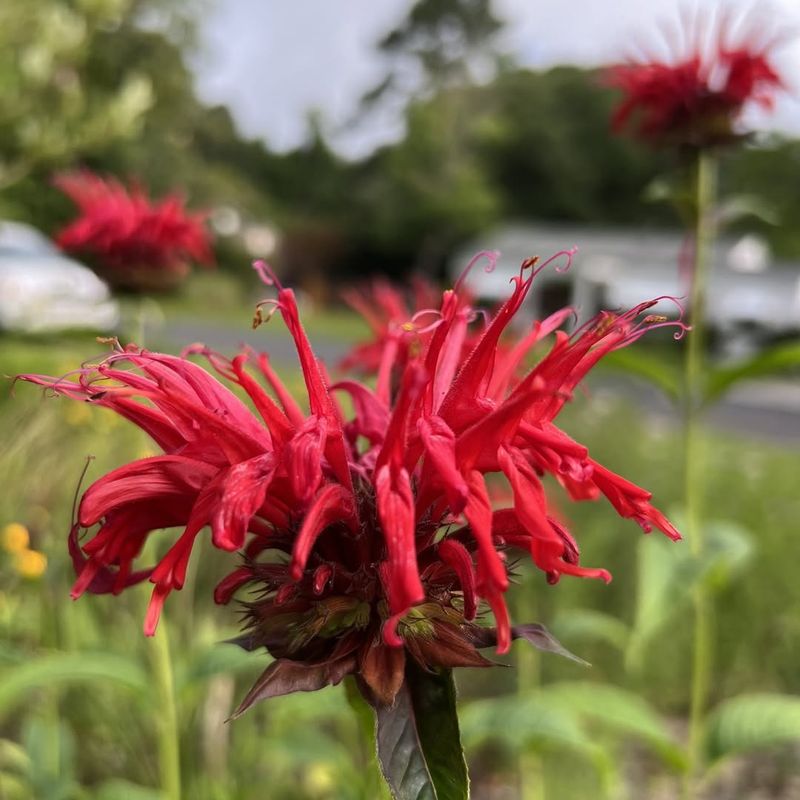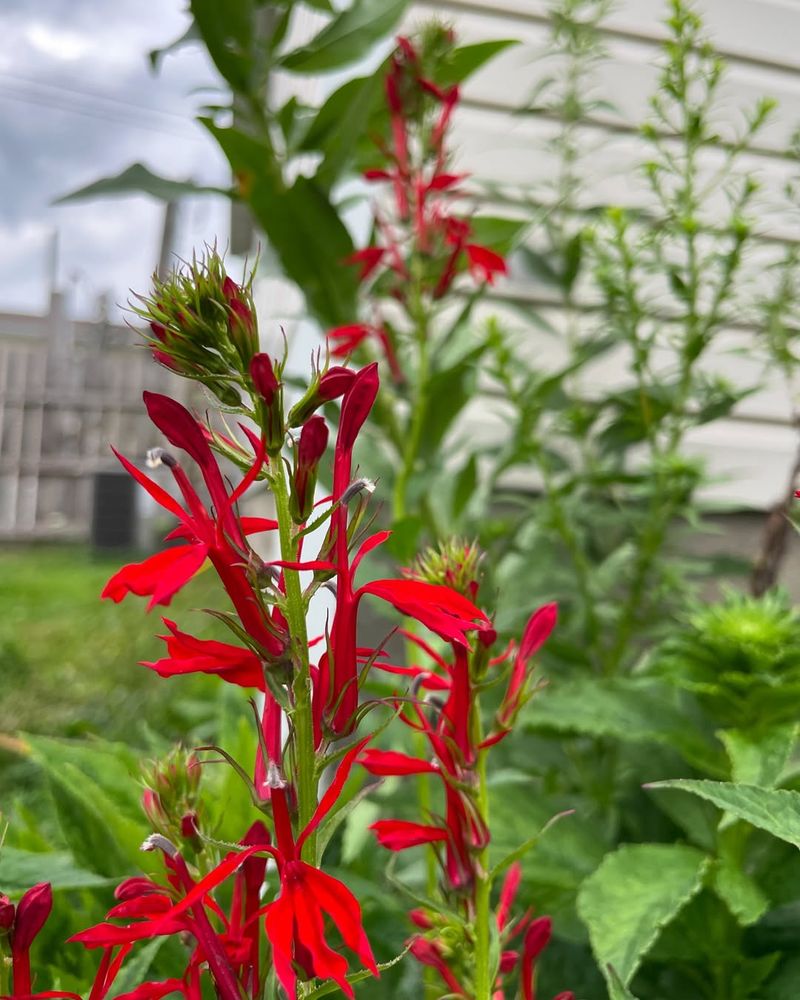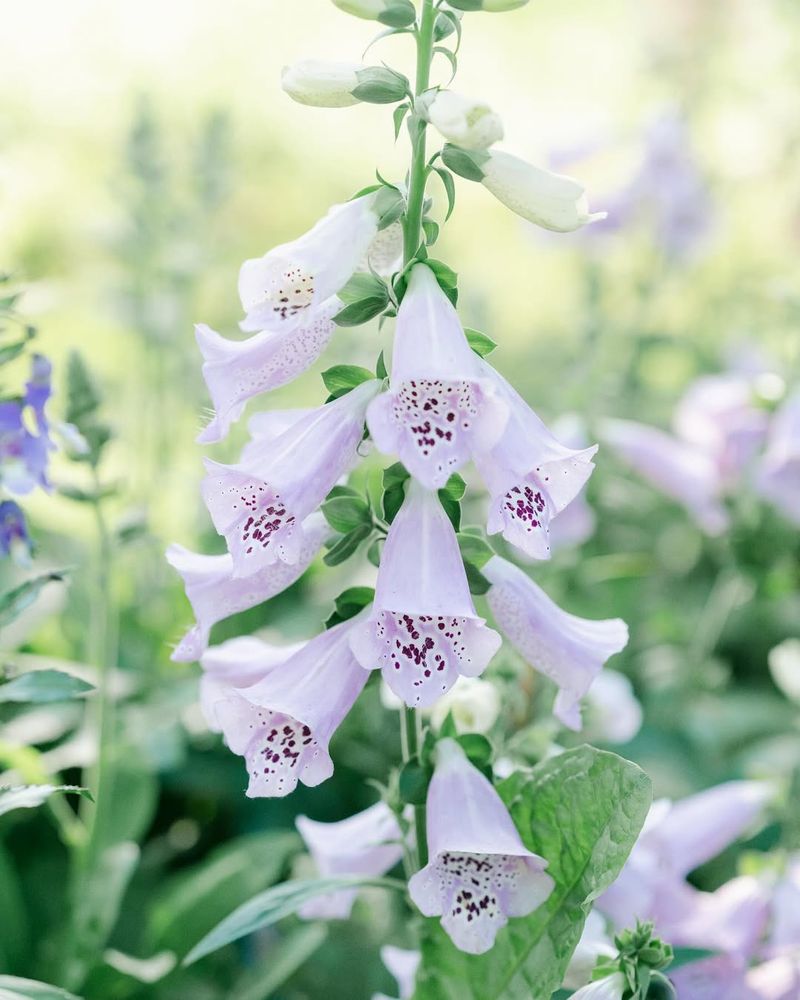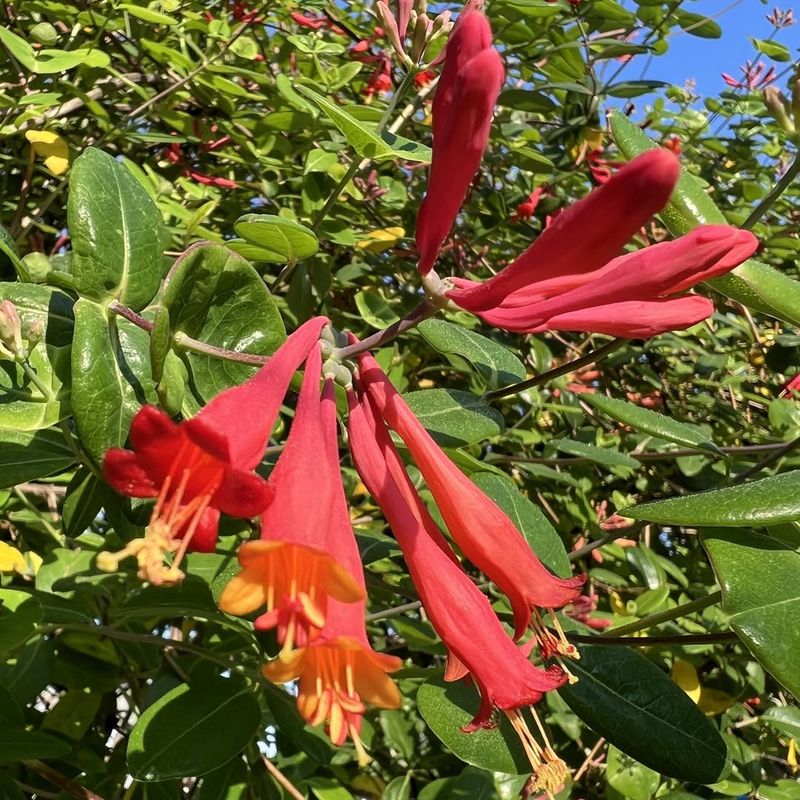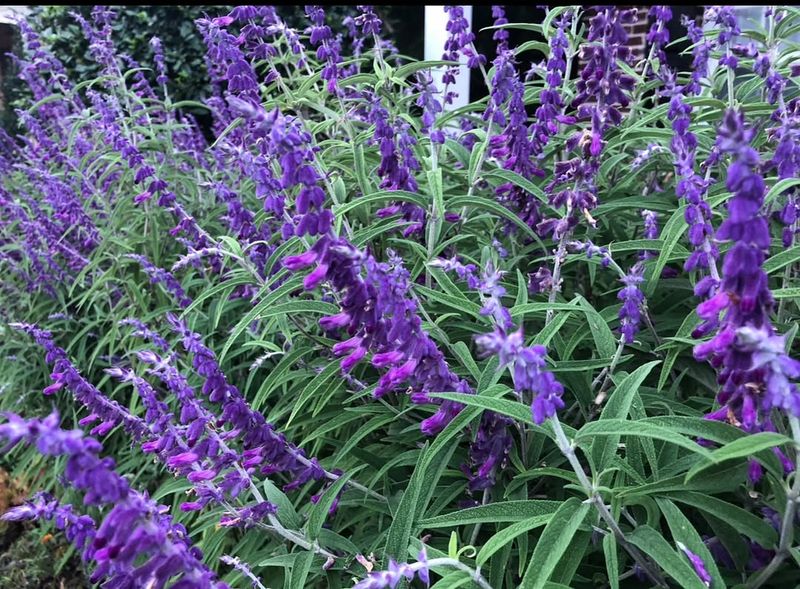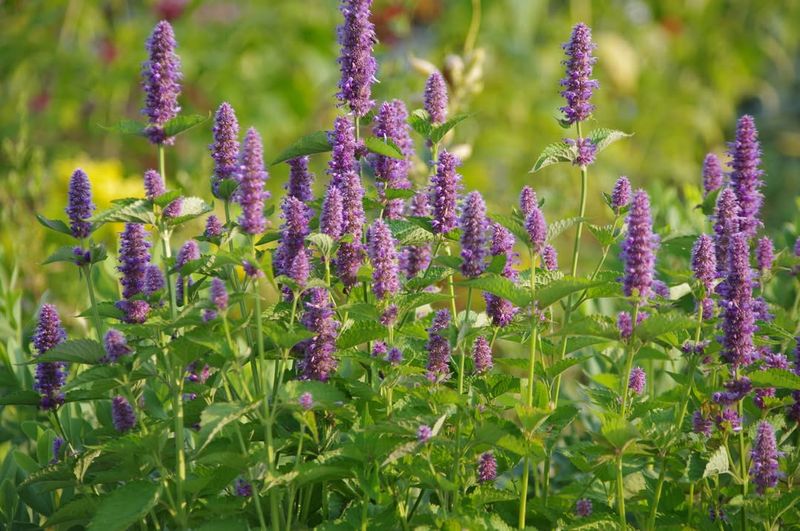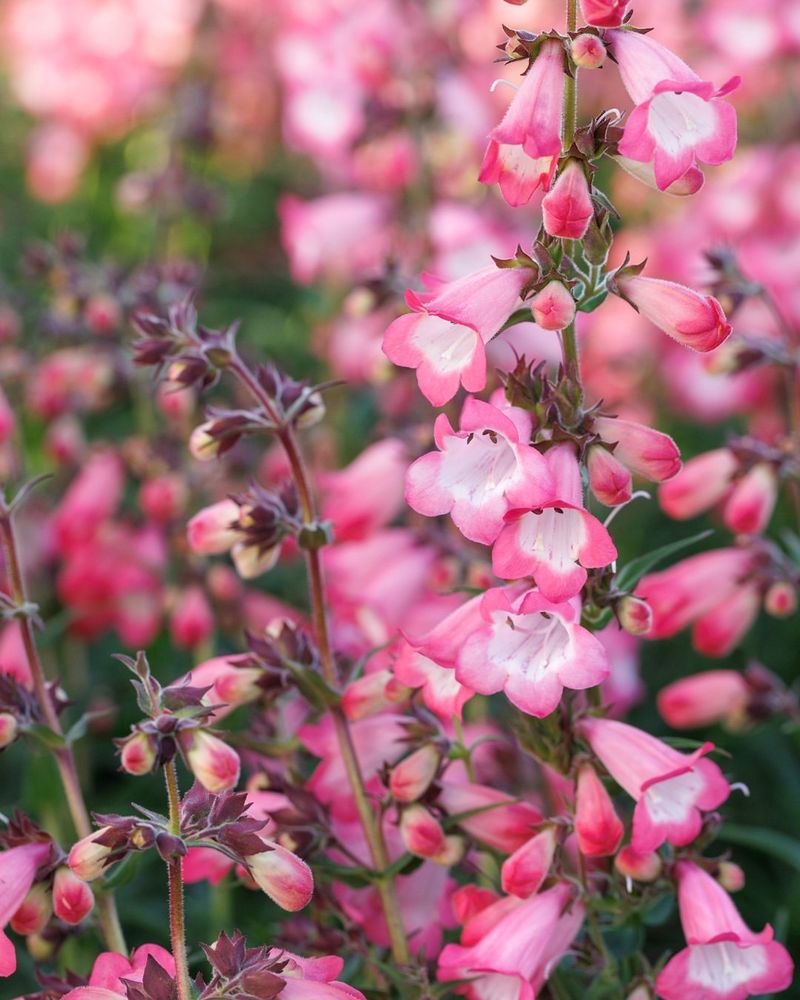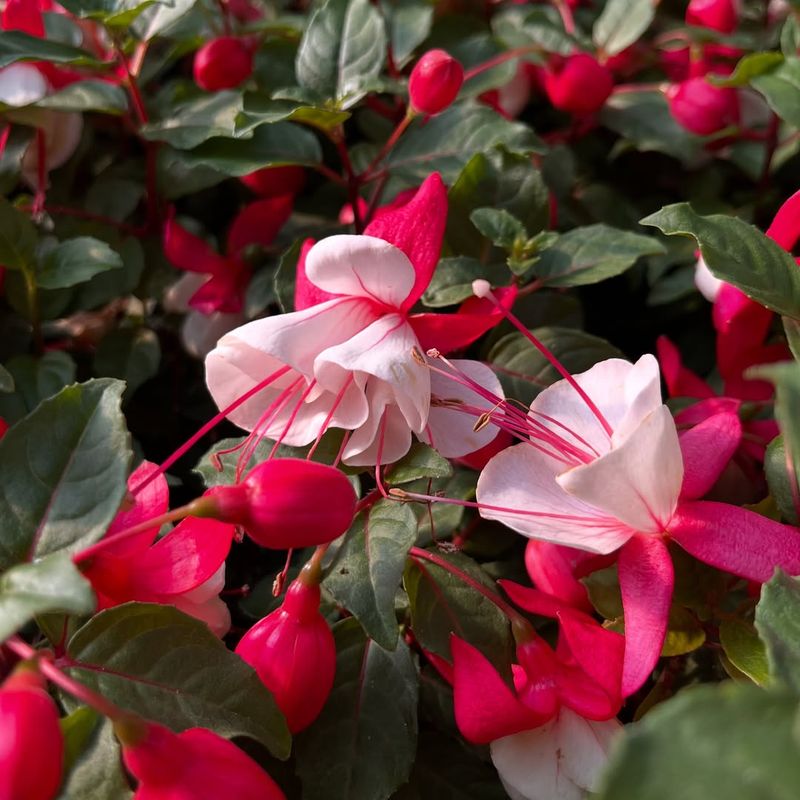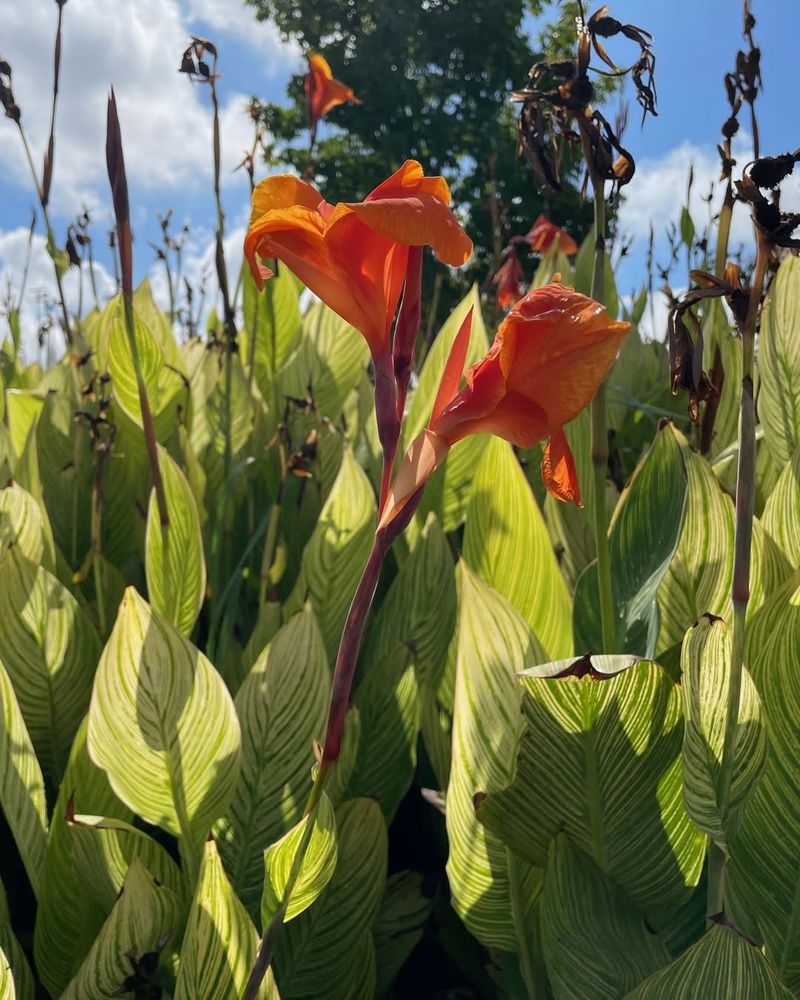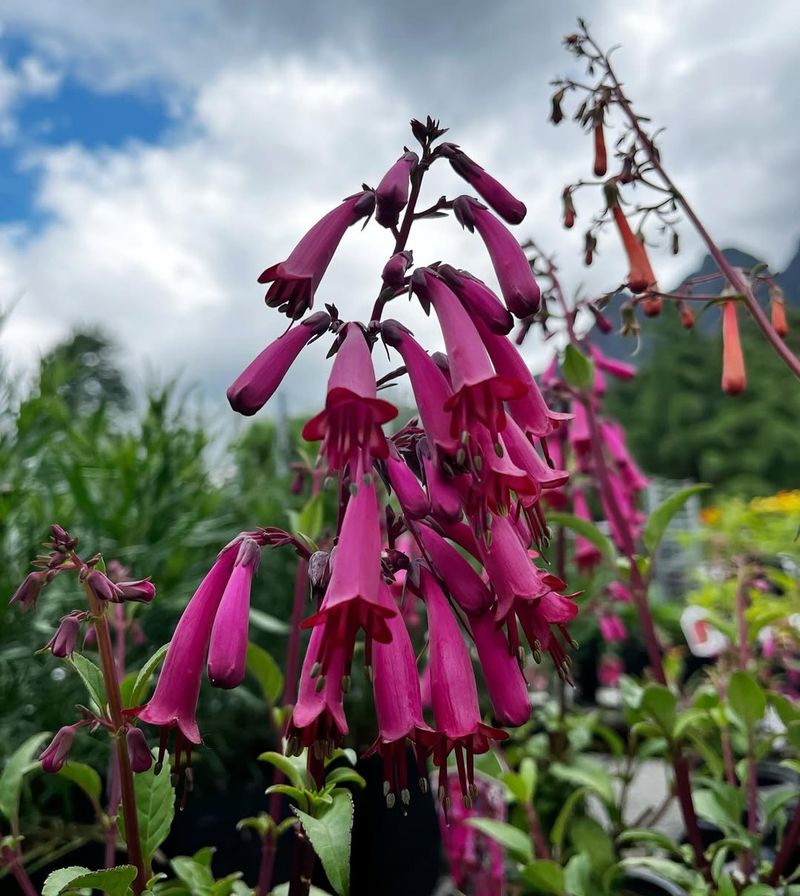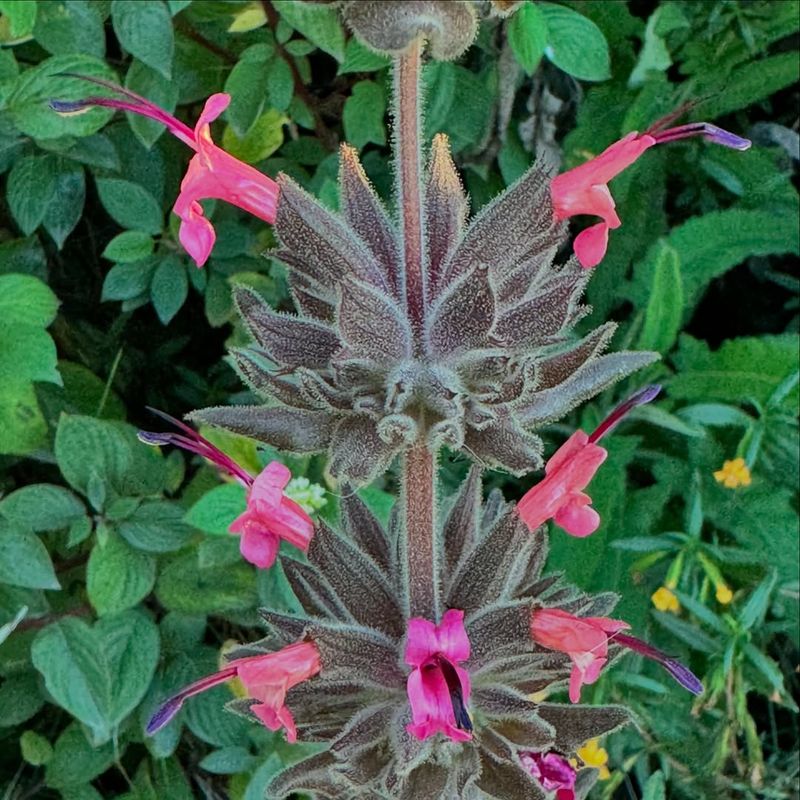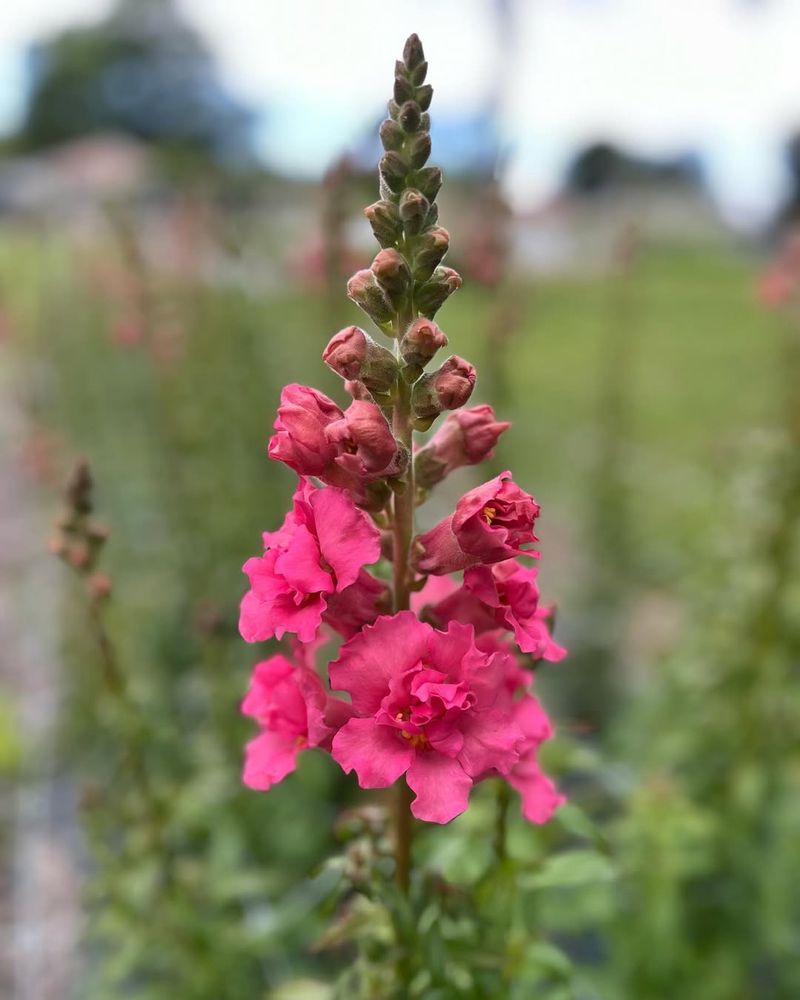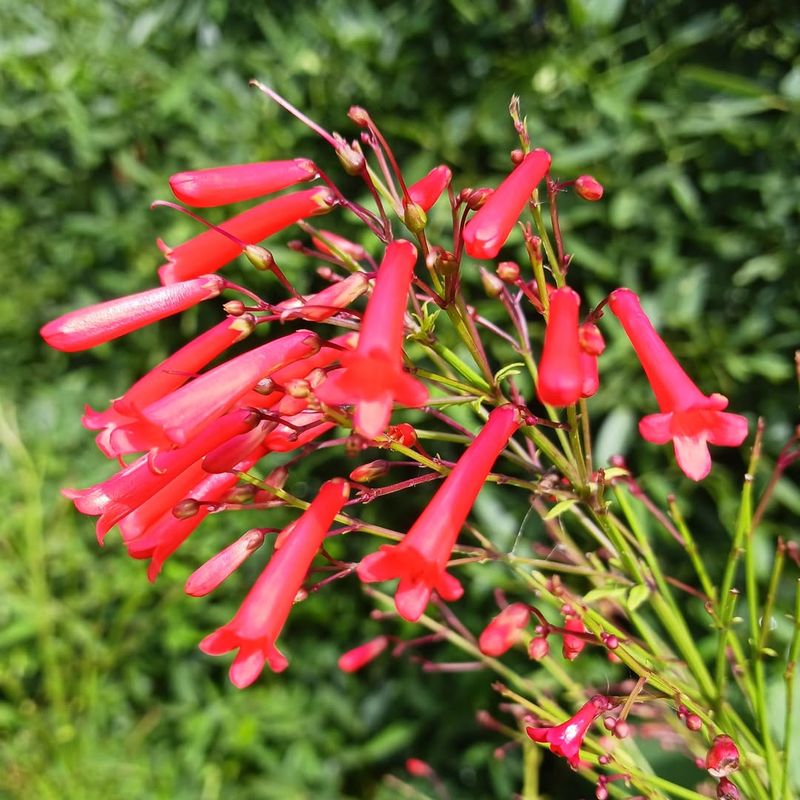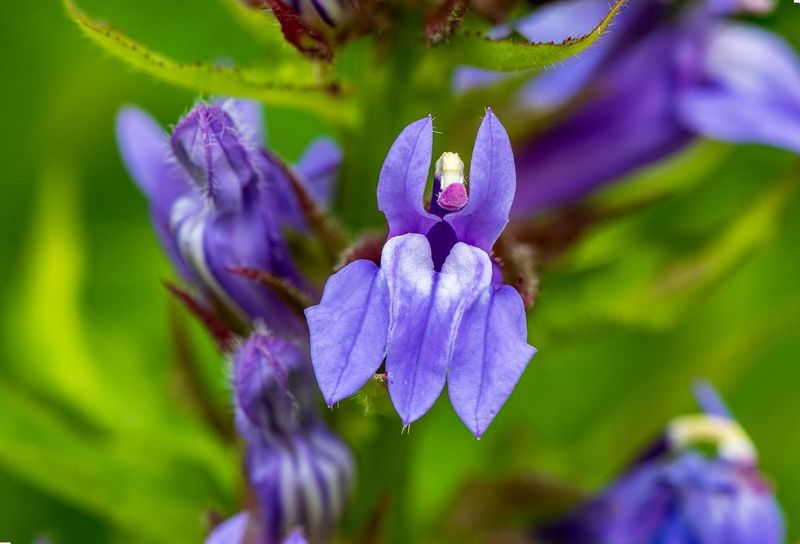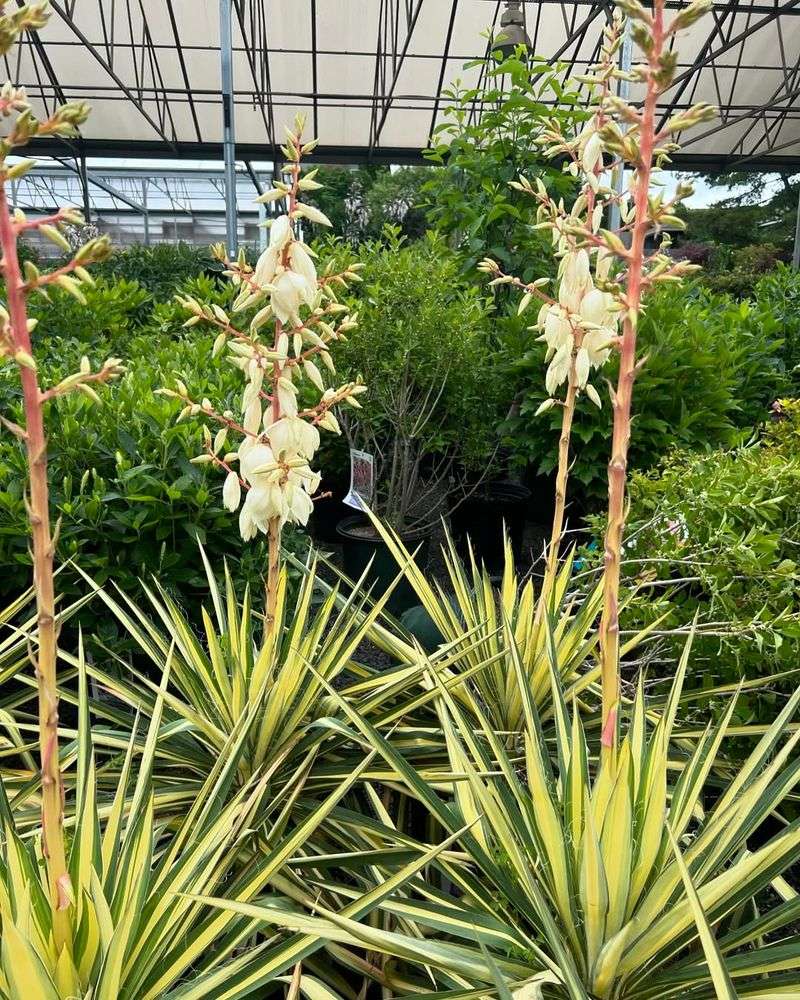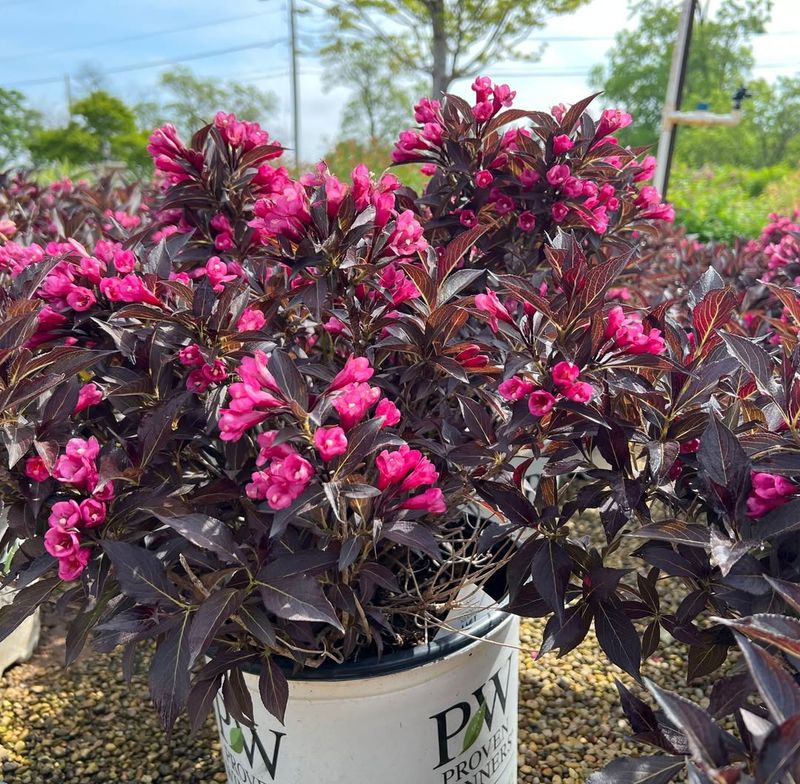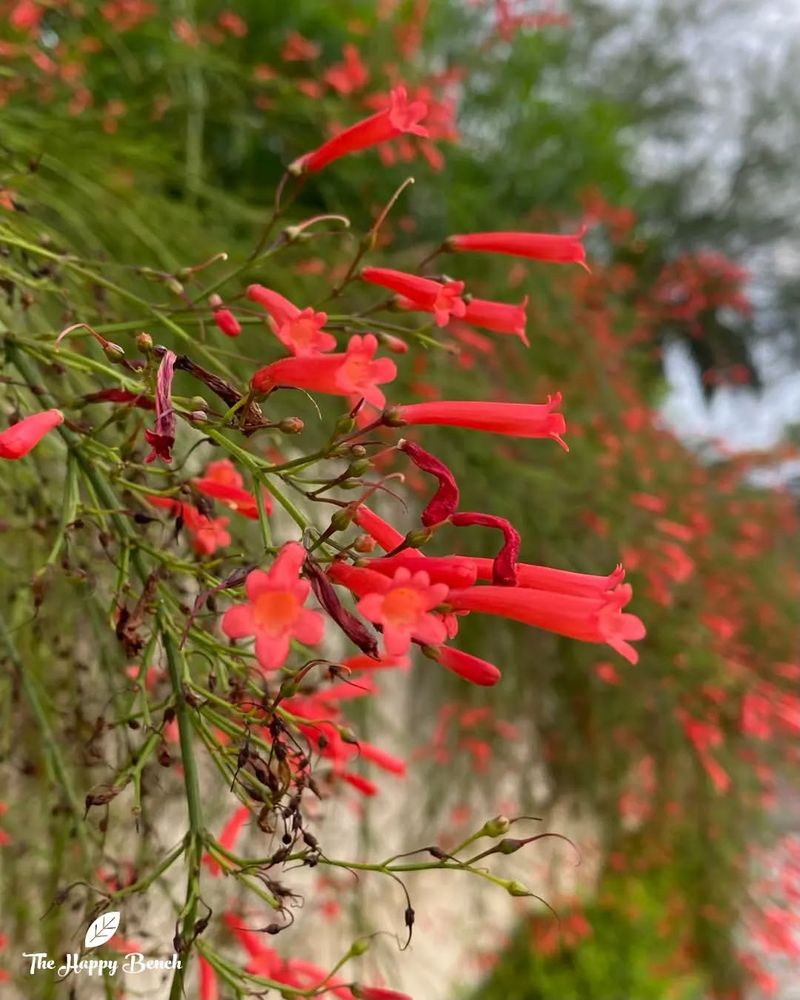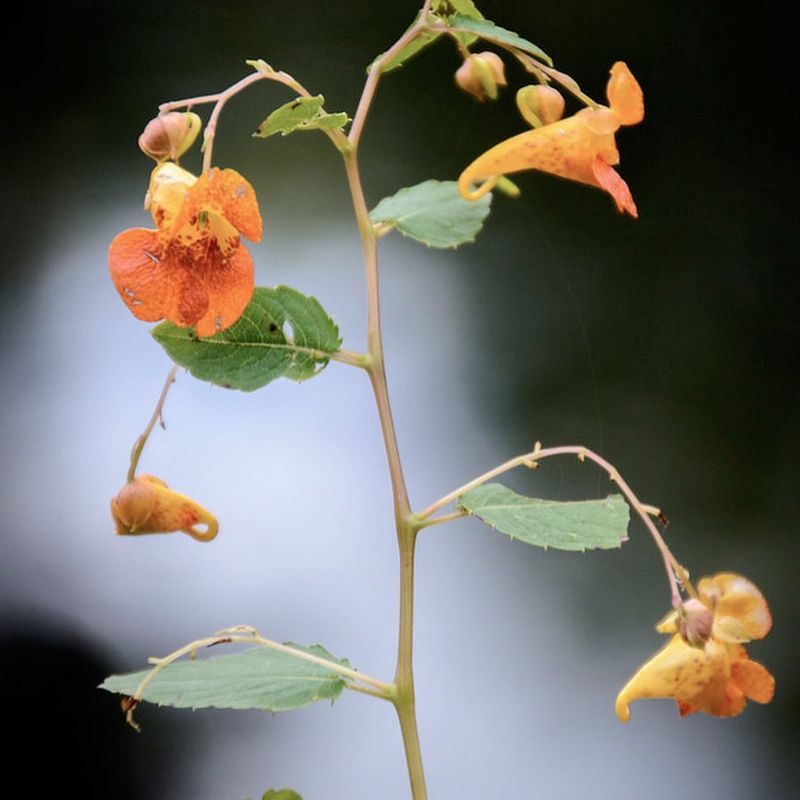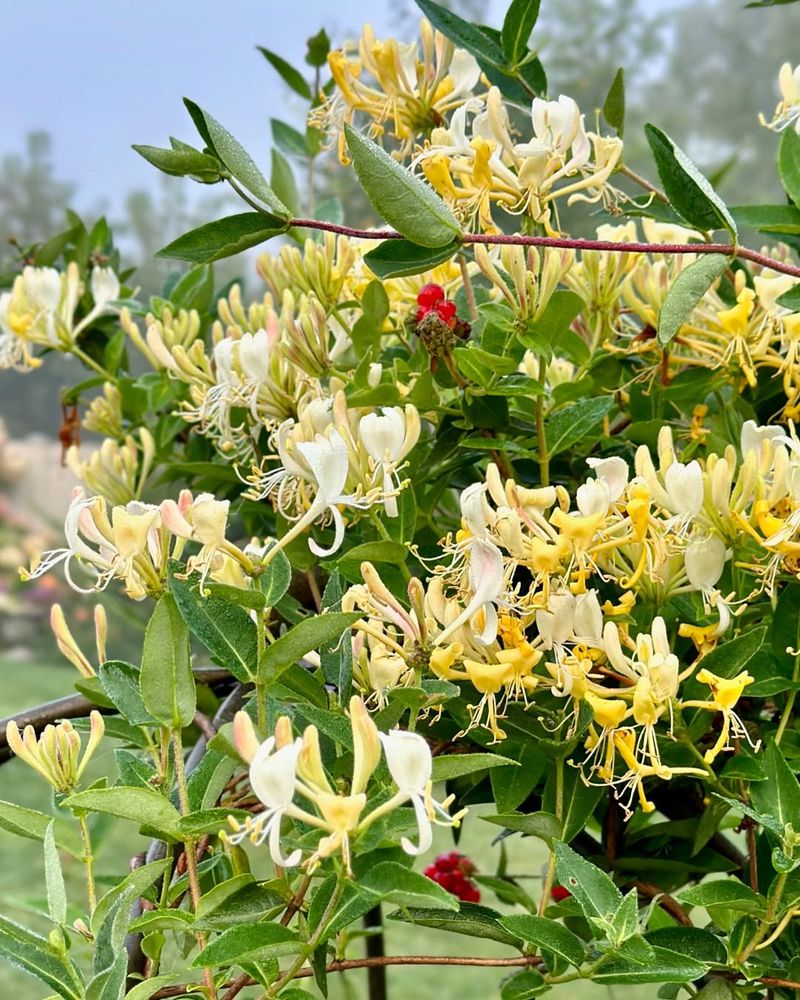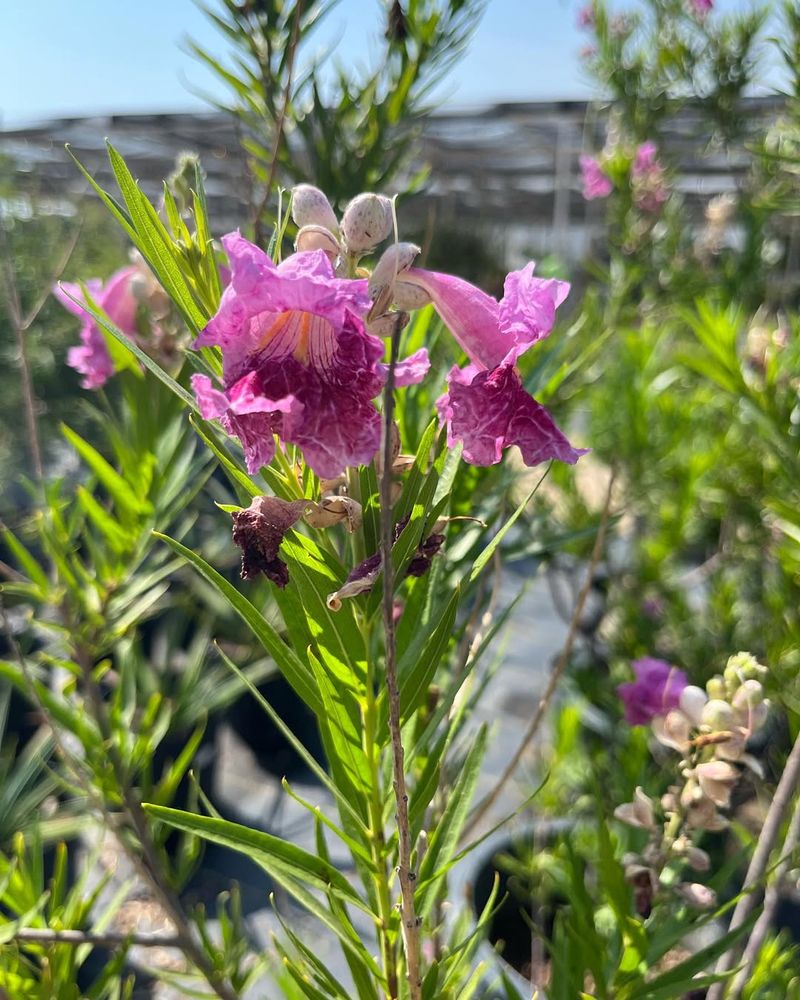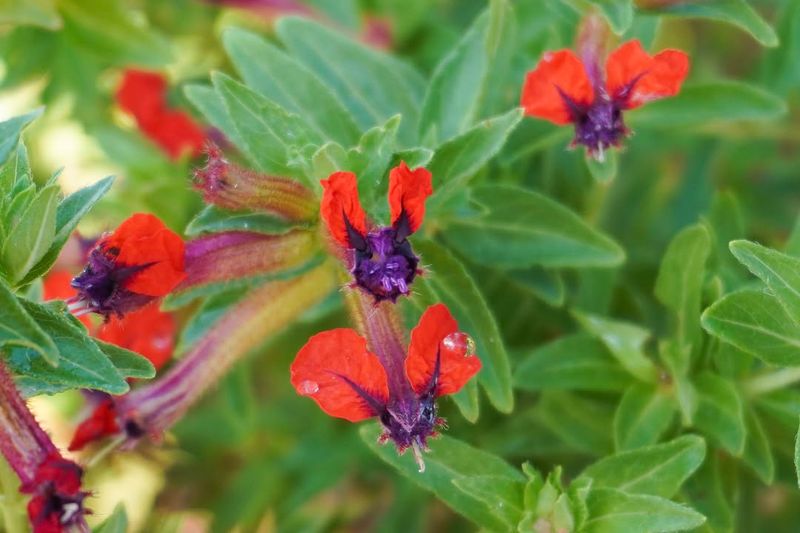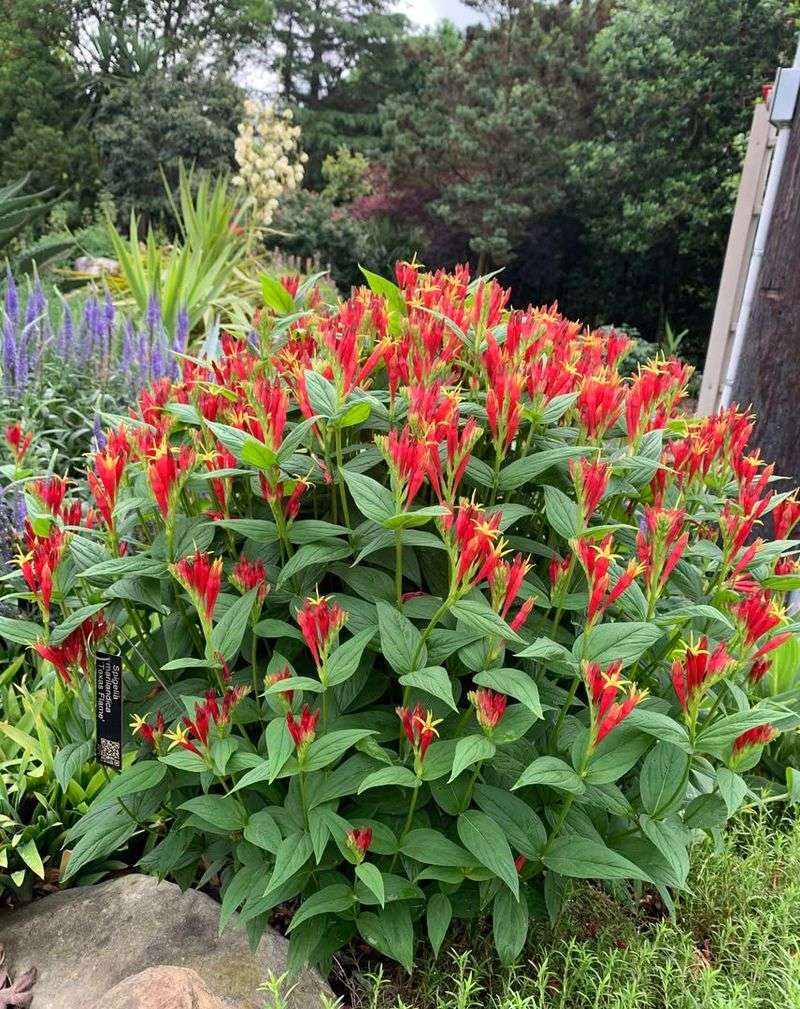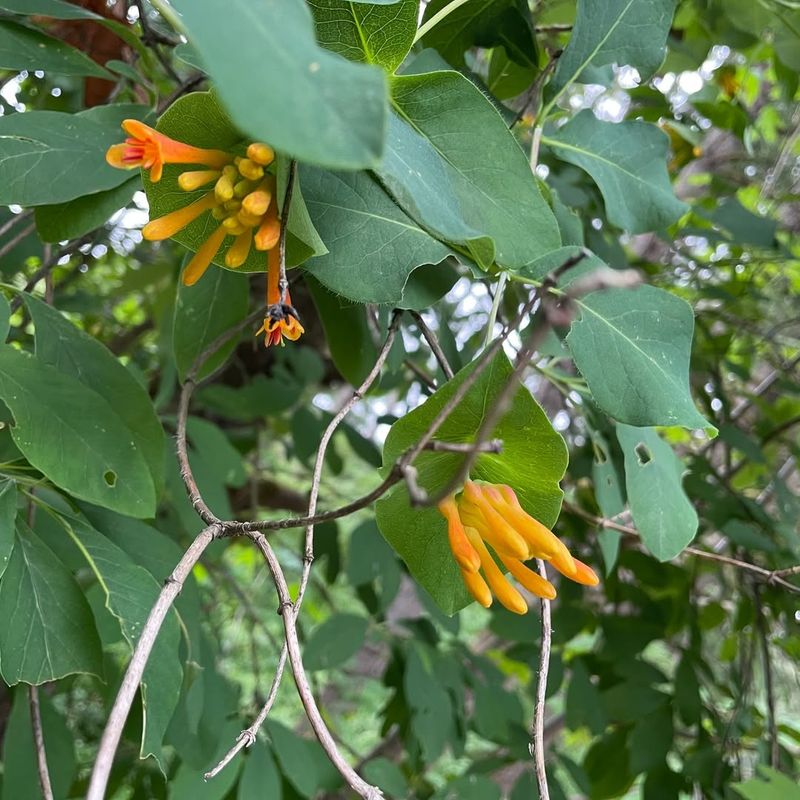Hummingbirds are fascinating creatures that are naturally drawn to tubular flowers. With their long beaks and quick wings, they hover around these colorful blooms, sipping nectar and pollinating as they go. Here, we present 25 stunning tubular flowers that are known to attract these tiny birds, offering them nourishment and delighting gardeners with their beauty and vibrant colors.
1. Trumpet Vine
The trumpet vine is a magnet for hummingbirds, with its vibrant, trumpet-shaped blooms. Flourishing in sunny gardens, this climbing vine adorns fences and trellises. Its fiery red-orange flowers bloom from summer to fall, offering a prolonged feast for hummingbirds.
Besides attracting birds, trumpet vine adds dramatic flair to any landscape. The plant is vigorous and may need regular pruning to control its growth. Its enchanting flowers and lush foliage are a haven for hummingbirds, ensuring they return year after year.
2. Red Hot Poker
Red Hot Poker, known for its striking appearance, attracts hummingbirds with its tall, bright spikes. These spectacular blooms provide a vibrant splash of color to any garden setting. They thrive in well-drained soil and full sunlight, making them ideal for borders and beds.
The unique shape and fiery colors create a visual spectacle, drawing both birds and human admirers. Beyond its aesthetic appeal, Red Hot Poker is low-maintenance, requiring little more than occasional watering during dry spells. Its resilience makes it perfect for gardeners of all levels.
3. Bee Balm
Bee Balm is a delightful addition to gardens, cherished for its vibrant, tubular flowers. This plant, with shades ranging from pink to red and purple, is a favorite among hummingbirds. It thrives in moist, well-drained soil and prefers a sunny spot.
Apart from its beauty, bee balm has medicinal properties, traditionally used for treating colds. Its aromatic leaves can also be brewed into an herbal tea. Plant bee balm to create a buzzing hub of pollinator activity, adding life and color to your garden.
4. Cardinal Flower
The Cardinal Flower stands out with its stunning red tubular blooms, a perfect lure for hummingbirds. This plant thrives in moist, rich soil, often found near streams and ponds. Its vibrant flowers bloom from late summer to early fall, offering a critical nectar source.
While it prefers partial shade, the Cardinal Flower can thrive in sunny spots with ample water. Its tall spikes add vertical interest to gardens, and its exotic appearance makes it a showstopper. Gardeners prize it for both its beauty and its ability to attract hummingbirds.
5. Foxglove
Foxglove is a classic cottage garden favorite, beloved for its tall spikes of bell-shaped flowers. Available in shades of purple, pink, and white, these blooms attract hummingbirds with their enticing shape and nectar.
Thriving in partial shade, foxglove prefers well-drained soil and can add vertical interest to garden borders. While stunning, this plant is toxic if ingested, so it should be handled with care, especially around pets and children. Despite this, its beauty and allure for hummingbirds make it a garden staple.
6. Coral Honeysuckle
Coral Honeysuckle is a perennial vine cherished for its tubular coral-pink flowers. It’s a non-invasive alternative to the common honeysuckle, making it ideal for eco-conscious gardeners. Blooming from spring to summer, it provides a long-lasting nectar source for hummingbirds.
Plant this vine in full sun to partial shade for best results. Its evergreen leaves offer year-round interest, while the blooms attract not only hummingbirds but also butterflies and bees. Coral Honeysuckle is both beautiful and beneficial, enhancing any landscape with its vibrant presence.
7. Salvia
Salvia, with its striking spikes of tubular flowers, is a staple in hummingbird gardens. Available in a range of colors, including blue, purple, and red, salvia blooms from summer to fall, offering a consistent nectar source.
These hardy plants are drought-tolerant, thriving in sunny locations with well-drained soil. Beyond their appeal to hummingbirds, salvias attract a variety of pollinators, making them a biodiversity booster. Easy to grow and maintain, salvia is a rewarding choice for gardeners seeking color and wildlife.
8. Agastache
Agastache is a must-have for a hummingbird-friendly garden, known for its aromatic foliage and tubular flowers. Blooming in shades of pink, purple, and orange, it attracts a variety of pollinators.
This plant flourishes in full sun and well-drained soil, making it drought-tolerant and low-maintenance. Its licorice-scented leaves add an extra sensory dimension to gardens. Agastache’s long blooming period ensures a steady supply of nectar, keeping hummingbirds and other visitors coming back for more.
9. Penstemon
Penstemon, also known as beardtongue, is loved for its colorful, tubular blooms that attract hummingbirds. Available in a variety of hues, including pink, purple, and red, penstemon adds vibrancy to any garden.
This plant thrives in well-drained soil and full sun, making it ideal for rock gardens and borders. Penstemon is drought-tolerant, needing minimal care once established. Its eye-catching flowers are not only a visual delight but also a crucial nectar source for hummingbirds.
10. Fuchsia
Fuchsia, with its pendulous, tubular flowers, is a favorite among hummingbirds. Its vibrant pink and purple blooms hang elegantly from baskets and containers, creating a stunning display.
Thriving in partial shade, fuchsias require regular watering to flourish. They are ideal for adding color to shaded garden areas. Beyond their beauty, fuchsias provide essential nectar for hummingbirds throughout the growing season. Their unique flower shape and striking colors make them a standout choice for any hummingbird garden.
11. Canna Lily
Canna Lilies are tropical beauties that attract hummingbirds with their bold, tubular flowers. Available in striking reds, oranges, and yellows, these plants offer a dramatic splash of color.
Cannas thrive in full sun and rich, well-drained soil. Their large leaves and vibrant blooms make them a focal point in any garden. Regular watering and fertilization will keep them thriving. Canna Lilies not only provide visual interest but also serve as a reliable nectar source for hummingbirds, making them a must-have for vibrant garden landscapes.
12. Cape Fuchsia
Cape Fuchsia is a delightful perennial known for its clusters of tubular flowers. Blooming in shades of red, pink, and orange, it draws hummingbirds with its nectar-rich blossoms.
This plant thrives in full sun to partial shade, preferring well-drained soil. Its long blooming season, from summer to fall, provides ample feeding opportunities for hummingbirds. Cape Fuchsia is low-maintenance and drought-tolerant once established, making it a practical choice for any garden. Its combination of beauty and resilience ensures it remains a popular choice among gardeners.
13. Hummingbird Sage
Hummingbird Sage lives up to its name, attracting hummingbirds with its tubular, aromatic flowers. These pink and red blooms add a splash of color to garden beds and borders.
Thriving in full sun to partial shade, this perennial prefers well-drained soil. Hummingbird Sage is drought-tolerant and low-maintenance, ideal for eco-conscious gardeners. Its fragrant leaves can also be used in culinary applications, adding versatility. The plant’s long blooming period ensures a consistent nectar source, keeping hummingbirds coming back for more.
14. Snapdragon
Snapdragons bring a playful touch to gardens with their colorful, tubular flowers. Available in a wide range of hues, from reds and pinks to yellows and purples, these blooms are a favorite among hummingbirds.
Preferring full sun, snapdragons thrive in well-drained soil. They are versatile and can be used in borders, containers, and as cut flowers. Regular deadheading will promote continuous blooming. Snapdragons are easy to grow, making them a popular choice for gardeners of all experience levels, while their charming flowers delight both humans and hummingbirds.
15. Firecracker Plant
The Firecracker Plant, with its bright red, slender flowers, brings explosive color to gardens. These tubular blooms attract hummingbirds, offering a rich source of nectar.
Ideal for containers, this plant thrives in full sun and well-drained soil. Its cascading growth habit makes it perfect for hanging baskets and elevated planters. The Firecracker Plant requires minimal care, making it a favorite for busy gardeners. Its continuous blooming period ensures a lively scene, providing both visual interest and nourishment for visiting hummingbirds throughout the warmer months.
16. Lobelia
Lobelia is cherished for its masses of bright, tubular flowers. Available in shades of blue, purple, and red, it creates a striking visual effect in gardens.
This annual plant thrives in full sun to partial shade, preferring moist, well-drained soil. Lobelia is perfect for borders, hanging baskets, and containers, adding color to any garden space. Its low-growing habit and dense blooms make it ideal for ground cover. Beyond its beauty, lobelia provides a nectar-rich haven for hummingbirds, ensuring their regular visits.
17. Yucca
Yucca plants offer a unique addition to gardens with their tall, tubular flowers. These striking blooms rise above sharp, green leaves, creating a dramatic silhouette.
Thriving in full sun and well-drained soil, yuccas are drought-tolerant and require little maintenance. Their architectural form makes them perfect for xeriscaping and modern landscapes. Yucca’s creamy white flowers provide an unexpected nectar source for hummingbirds, adding to their garden appeal. Their blend of form and function ensures they remain a popular choice for gardeners seeking a minimalist aesthetic.
18. Weigela
Weigela is a deciduous shrub known for its abundant clusters of tubular flowers. Blooming in shades of pink, red, and white, it attracts hummingbirds with its nectar-rich blossoms.
Preferring full sun, weigela thrives in well-drained soil. This low-maintenance shrub is perfect for borders and hedges, providing seasonal interest with its vibrant blooms. Regular pruning will promote healthy growth and more flowers. Weigela’s showy display makes it a favorite among gardeners, while its nectar-filled blooms ensure hummingbirds frequent visits.
19. Russelia
Russelia, also known as the Firecracker Plant, enchants with its cascading red tubular flowers. These blooms dangle elegantly from arching stems, attracting hummingbirds with their rich nectar.
Ideal for containers and hanging baskets, russelia thrives in full sun and well-drained soil. Its cascading growth habit makes it perfect for creating lively garden displays. Low-maintenance and drought-tolerant, russelia is a practical choice for gardeners seeking both beauty and resilience. Its unique structure and vivid blooms provide a consistent nectar source, ensuring it remains a hummingbird favorite.
20. Jewelweed
Jewelweed captivates with its delicate, tubular flowers. Blooming in shades of orange and yellow, these flowers provide nectar for hummingbirds and butterflies alike.
This plant thrives in moist, shaded areas, often found near streams and ponds. Jewelweed’s ability to repel insects makes it a natural companion for outdoor spaces. Beyond its beauty, it has traditional uses in soothing skin irritations. Jewelweed’s combination of ecological benefits and vibrant blooms ensures it remains a cherished addition to wildlife-friendly gardens.
21. Honeysuckle
Honeysuckle, with its sweet fragrance and tubular flowers, is a garden favorite. Blooming in shades of red, yellow, and white, it offers nectar-rich blossoms that attract hummingbirds.
This climbing vine thrives in full sun to partial shade, making it ideal for trellises and fences. Its vigorous growth requires regular pruning to keep it in check. Beyond its allure for hummingbirds, honeysuckle provides essential habitat for other pollinators. Its captivating scent and striking flowers make it a perennial favorite in nature-friendly gardens.
22. Desert Willow
Desert Willow, with its ornate, tubular flowers, thrives in arid regions. Blooming in shades of pink and lavender, these delicate flowers attract hummingbirds with their sweetness.
Ideal for xeriscaping, this small tree flourishes in full sun and well-drained soil. Its drought tolerance and minimal maintenance requirements make it a practical choice for dry landscapes. Beyond its aesthetic appeal, Desert Willow provides essential nectar and habitat for wildlife. Its elegant form and vibrant blooms ensure it remains a standout in desert gardens.
23. Bat-faced Cuphea
Bat-faced Cuphea delights with its unique, tubular flowers resembling tiny bat faces. These red and purple blooms are a hit with hummingbirds, offering a rich nectar supply.
Thriving in full sun, this plant prefers well-drained soil and is perfect for borders and containers. Its compact size and long blooming period make it ideal for small gardens. Bat-faced Cuphea is low-maintenance and drought-tolerant, ensuring it remains a favorite among gardeners seeking quirky charm. Its distinctive appearance and nectar-rich flowers guarantee it becomes a hummingbird hotspot.
24. Indian Pink
Indian Pink captivates with its bold, tubular flowers. These bright red and yellow blooms stand out in woodland gardens, attracting hummingbirds with their vivid colors.
This shade-loving plant thrives in rich, moist soil, making it ideal for woodland borders. Indian Pink’s unique appearance adds interest to shaded spaces, offering a splash of color where it’s least expected. Low-maintenance and long-blooming, it provides a reliable nectar source, keeping hummingbirds visiting throughout its flowering season. Its combination of beauty and utility ensures it remains a treasured find.
25. Trumpet Honeysuckle
Trumpet Honeysuckle is a vibrant vine known for its lovely flowers. Blooming from spring to summer, these blossoms provide a steady nectar source for hummingbirds.
This hardy plant thrives in full sun to partial shade, making it perfect for arbors and trellises. Its vigorous growth habit requires regular pruning to maintain its shape. Beyond its appeal to hummingbirds, trumpet honeysuckle offers shelter and habitat for other wildlife. Its stunning blooms and sweet fragrance ensure it remains a standout in any garden.

